IMAGES OF OUR FUTURE
Two sessions of the futures studies class were dedicated to working on Images of Our Future. Sixty-one undergraduate students from two different classes worked on two activities - the future of food and transportation.

Two sessions of the futures studies class were dedicated to working on Images of Our Future. Sixty-one undergraduate students from two different classes worked on two activities - the future of food and transportation. The session began with an introduction to the concept of the image of the future with a deck of slides showing trends and the driving forces of change such as societal preference, social unrests, environmental and the changing climate around us, how technology is changing how we live and work.
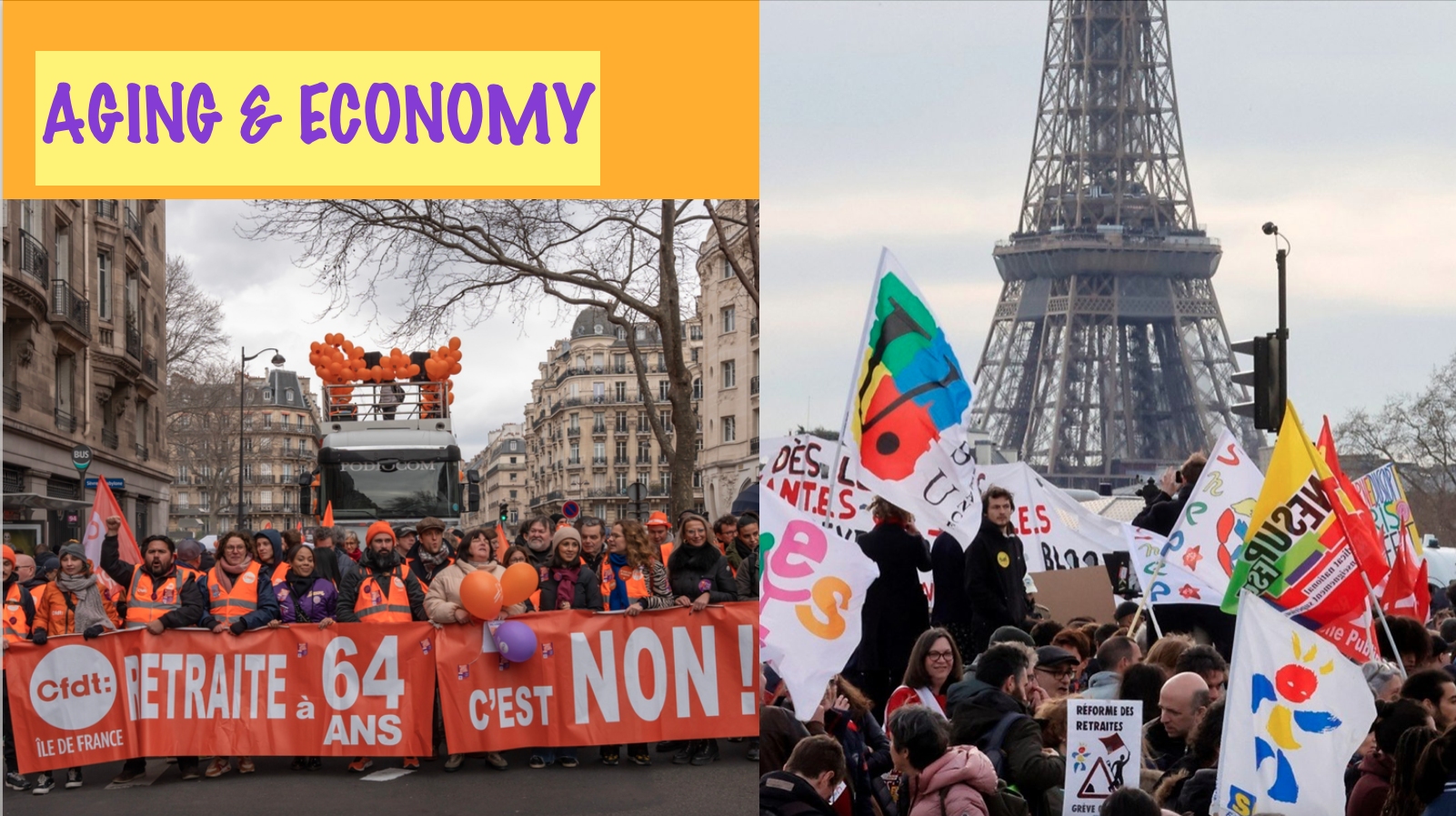
The Concept of Image of the Future
The proposition is to use the images of the future we hold in shaping a better place to live, a kinder society where people care and have empathy. While there are patterns of change in the society, economy and political and legal environment that shape our behavior, we can use their past experiences, perceptions and knowledge about what shaped the society’s present forms and limitations in thinking about our future, their actions and anticipation for the emerging future.
Polak (1973) discusses the concept of a vision that guides the actions of human dates back to the ancient civilisations such as the Sumerians, Egyptians, Mayans, Babylonians and Chinese, where the movements of the stars and planets, believed to be the signs of the gods, served the need to know the future, charted human actions. The modern society seek to frame the image of an ideal future which manifests from and reflects the values of the society. Marketing and public relations have long been using images to influence and manipulate consumers into buying things they didn’t know they need or that were unnecessary, see for example, in the 1930s, tobacco companies used physicians and dentists’ endorsements to promote smoking; or in 2017, the first generation iPhone changed how we interact with our mobile phones with full screen views of webpages rather than the typical smartphone designs in that era: half screen, half keyboard. Social influencers in this era use powerful public images and self-images that resonate with the masses in selling brands or ideas.
“There are no past possibilities, and there are no future facts” (Bell and Mau, 1971:9, quoting Robert Brumbaugh, 1966). The future has not happened but exists and is real, and it is open for possibilities (Bell and Mau, 1971, p10), as Dator (1998) puts it “…(the future) is the arena of dreams and of values” (p6).
The future as an image, which exists in people’s mind, is used to better understand individuals' and societal preferred futures.
This section was first published as Abdullah & Ismadi (2023), Exploring Images of Women Cyclists’ Futures Using the Futures Triangle. Journal of Futures Studies, Vol 27(3), p25-42.
Our 2041 Lunch
Food Future Activity
Step 1: That week the students returned to classes from a week of spring break. They were asked to share their experiences being away from classes: What was exciting? What made you happy or sad? What made you uncomfortable? After sharing, they were asked to summarise and pull their experiences together: What are the big issues? Figure 1 shows the student worksheet for step 1.
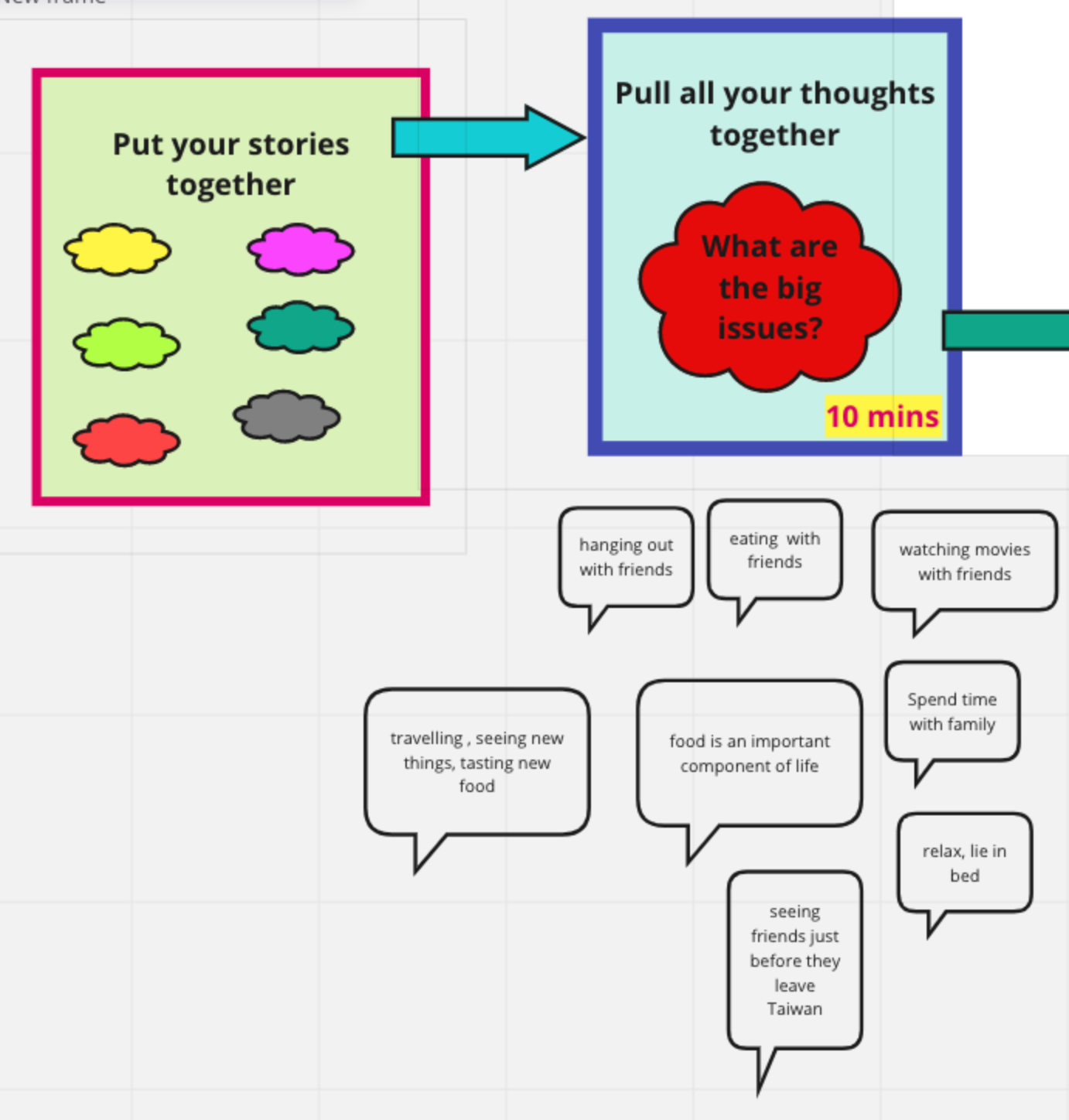
Step 2: Planet Earth is changing so will our food. How would our food look in 2041.
Students were asked to think about how those experiences might affect people and society. What might be some of the impacts and consequences of those experiences in the longer time? Think about how those impacts might affect our food. How would our food look in 2041? What kinds of food can you create to make those sadness and discomfort go away, or make our lives better?
Step 3: What socio-economical environment would be required to make that food creation a reality?
What technologies, ingredients, skills, energies, economy, government might be required for that idea of our future food becomes reality? Some prompts and ideas (Figure 2) to encourage some crazy, ridiculous ideas that might be considered 'too far out'. Figure 3 & 4 are examples of student creations.
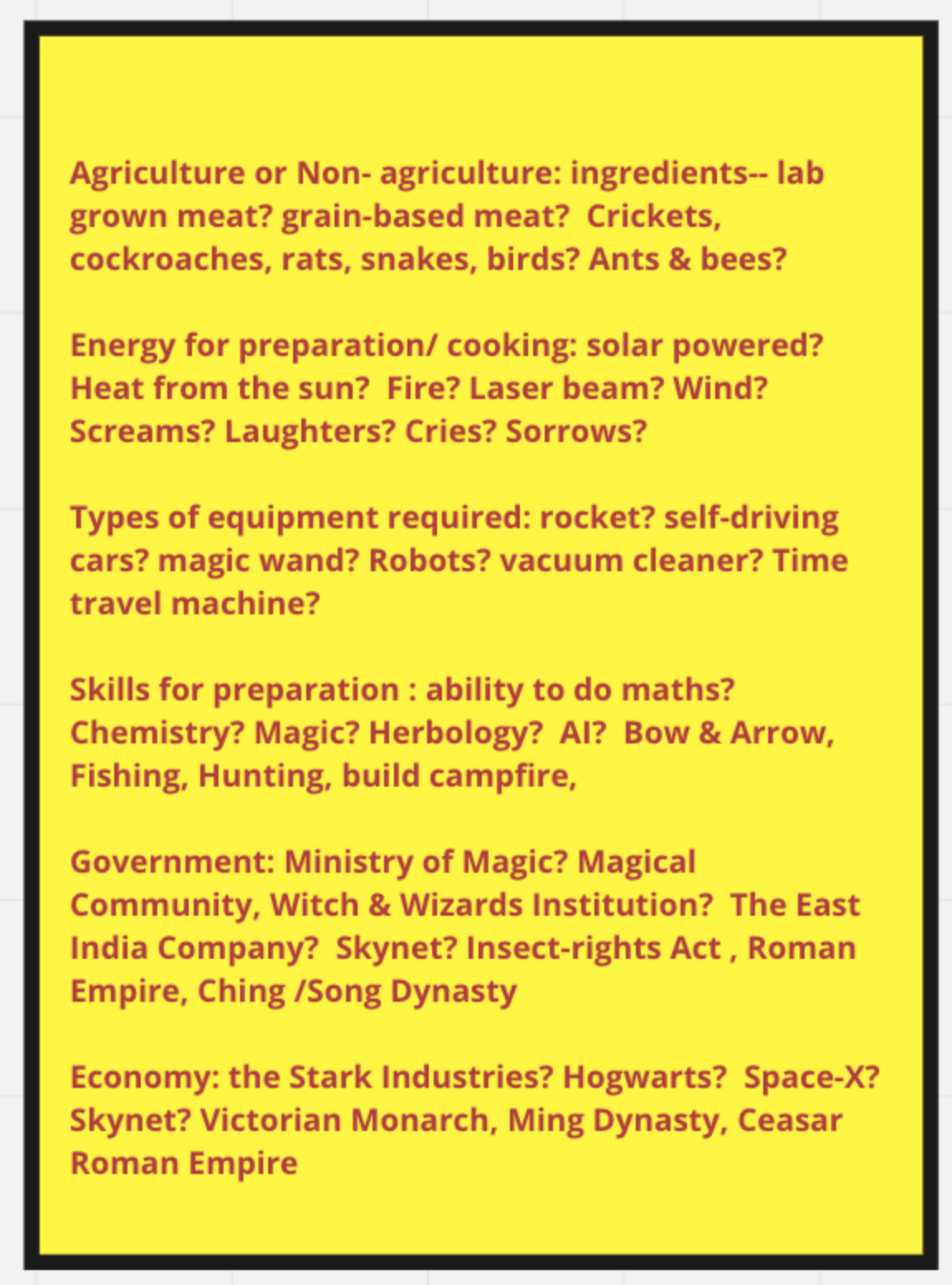
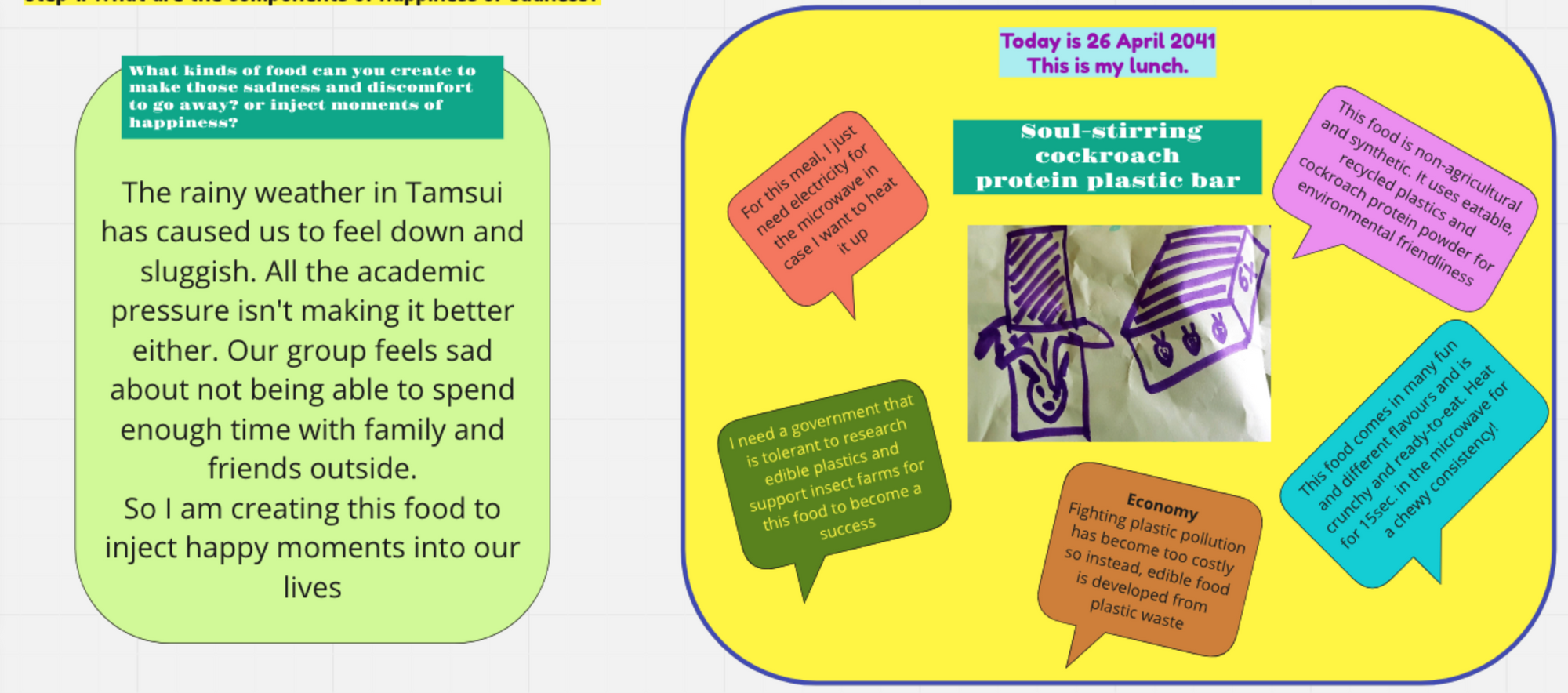
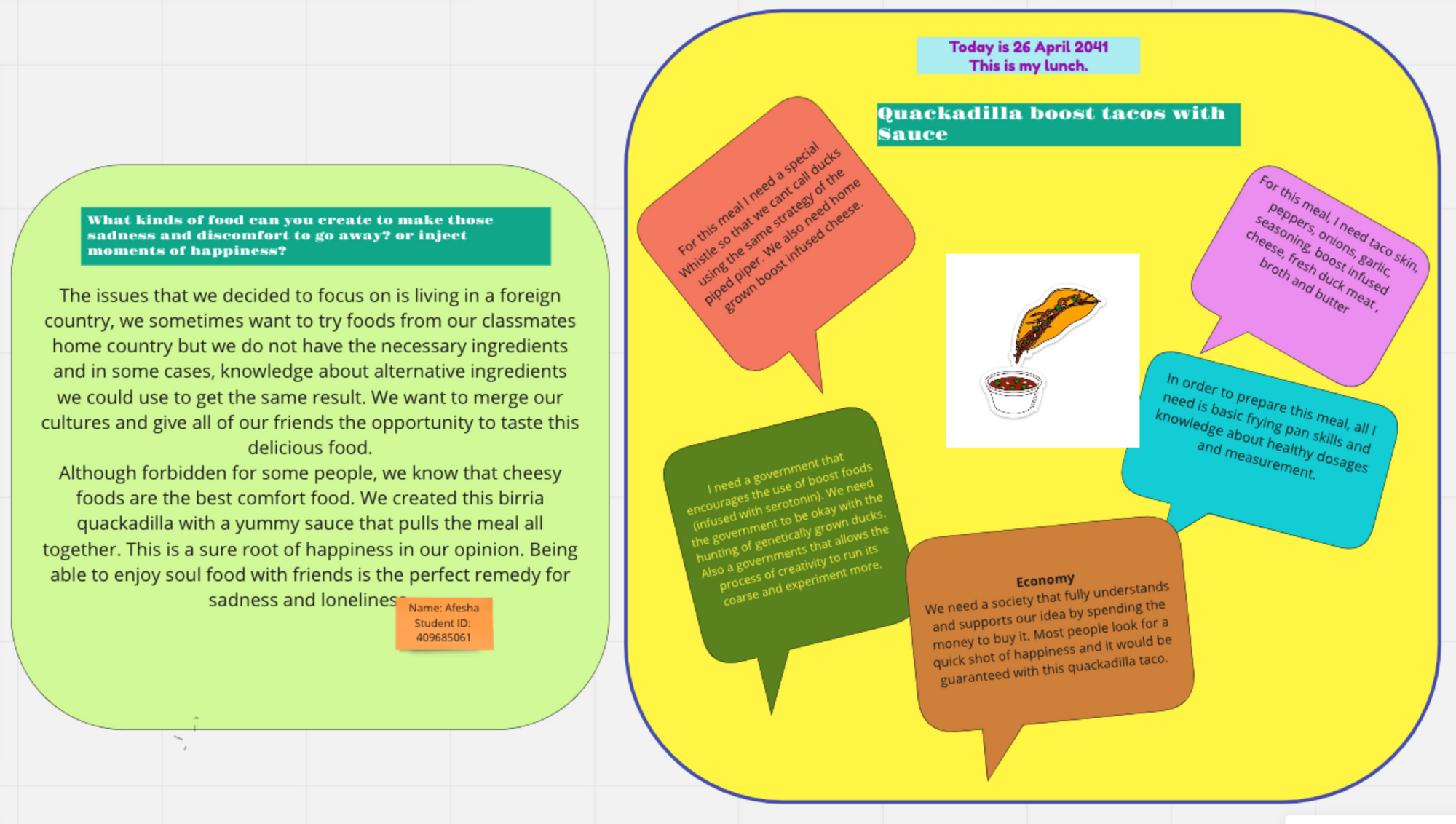
Our Transportation in 2041
Reimagining Future Transportation Activity
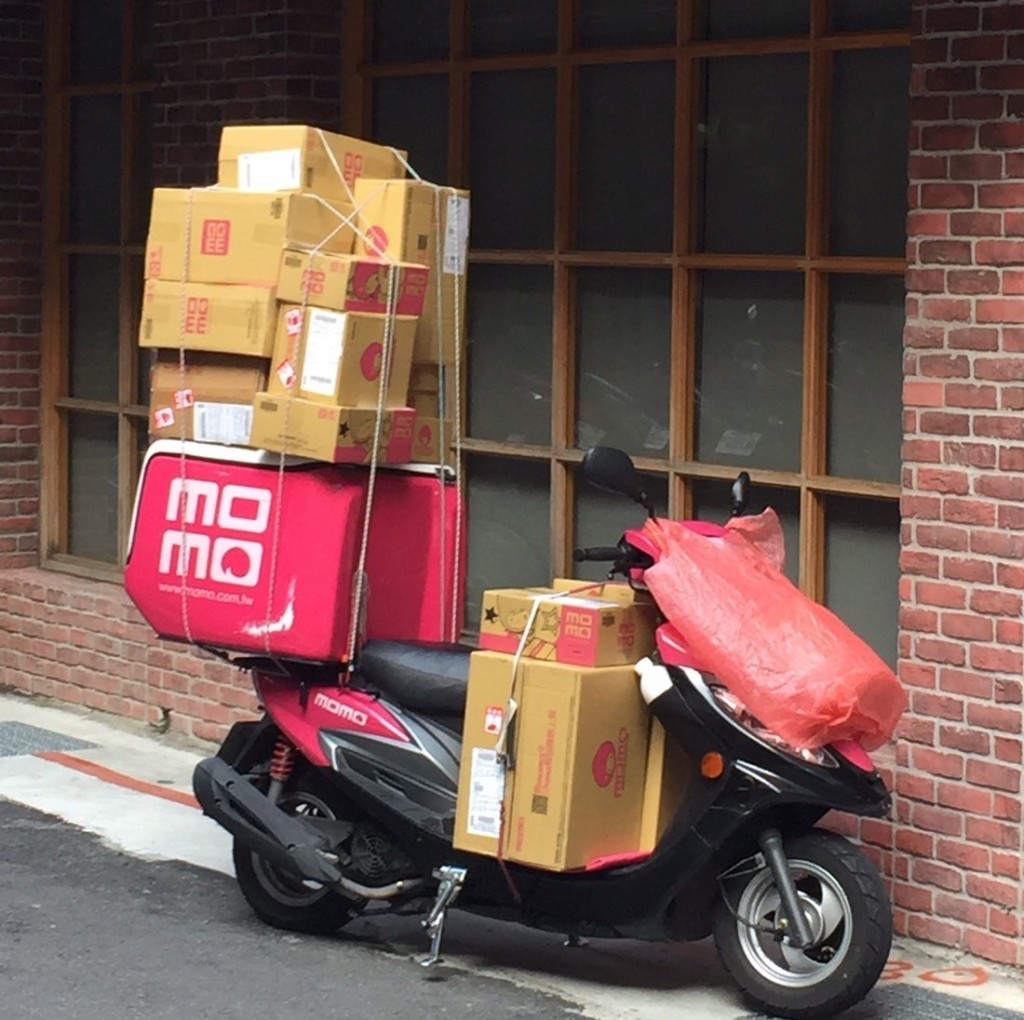
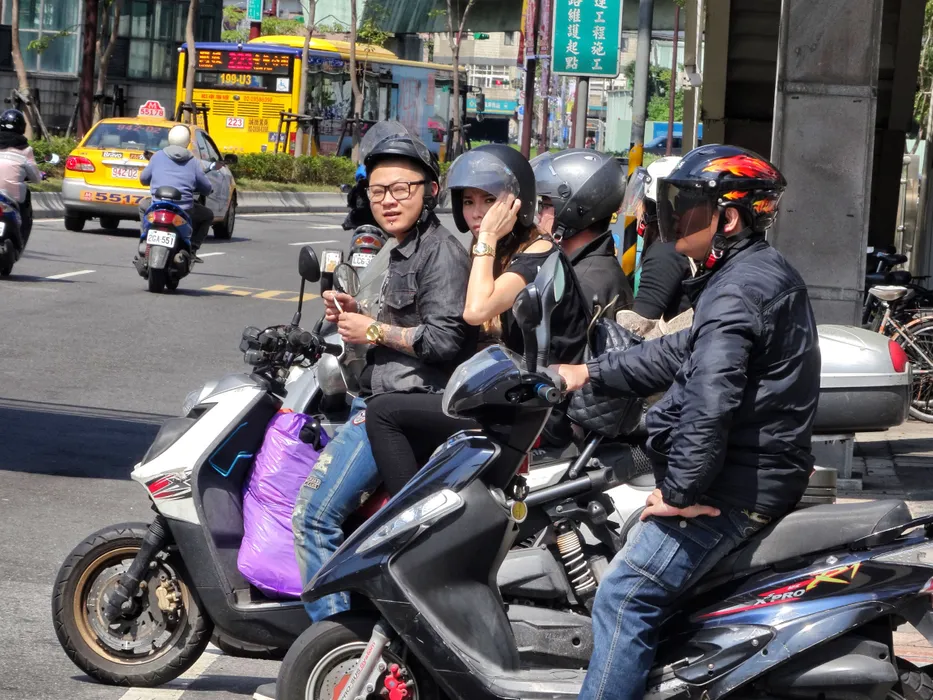
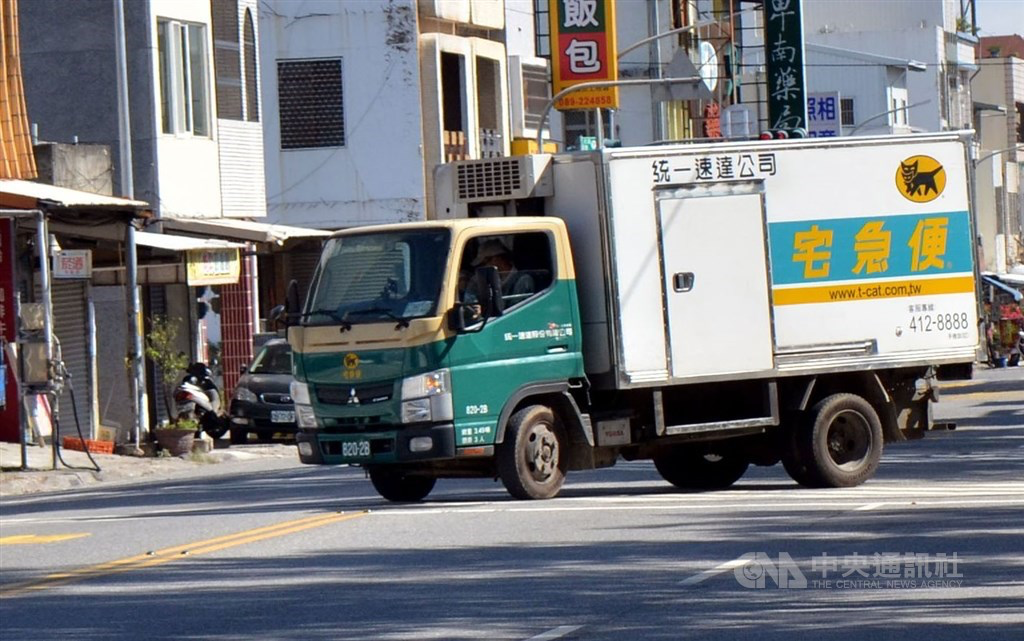
Issues with transportation
Step 1: Students were asked to share at least two complaints they have with transportation. As a group they were asked to summarise the reoccuring complaints that their friends have shared, as shown in Figure 5.
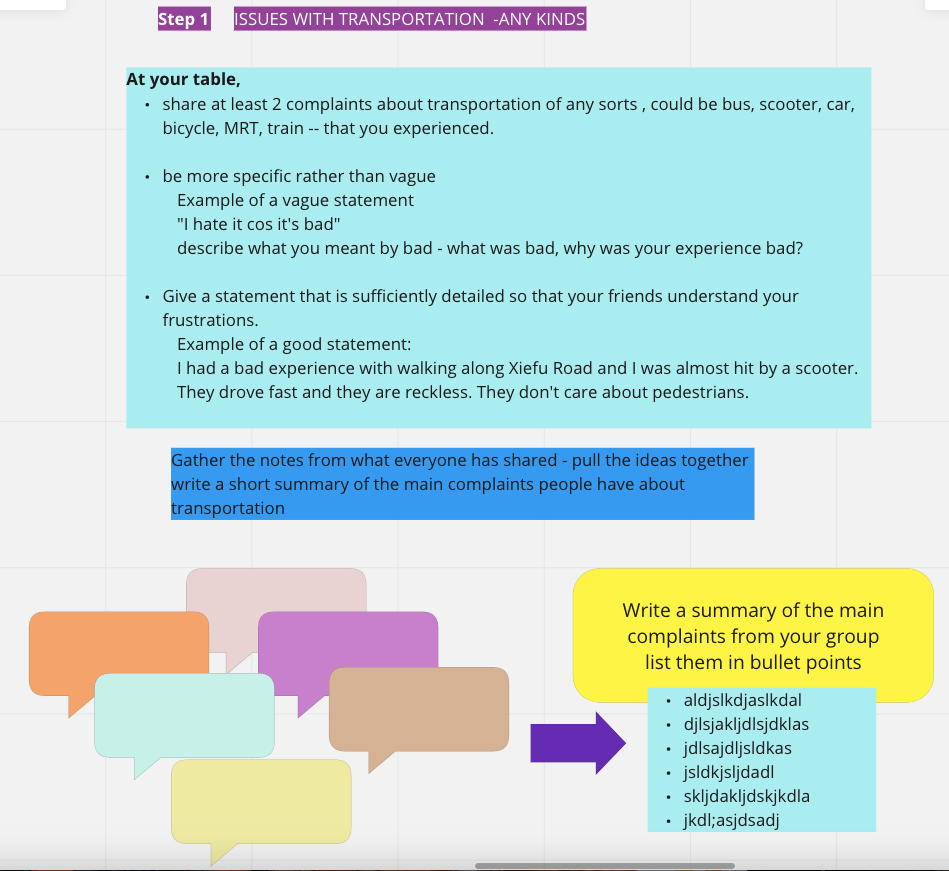
Step 2: Students were asked to think about how the chosen form of transportation has helped us. Prompts to guide thinking: Climate, technology and behaviour, see Figure 6.
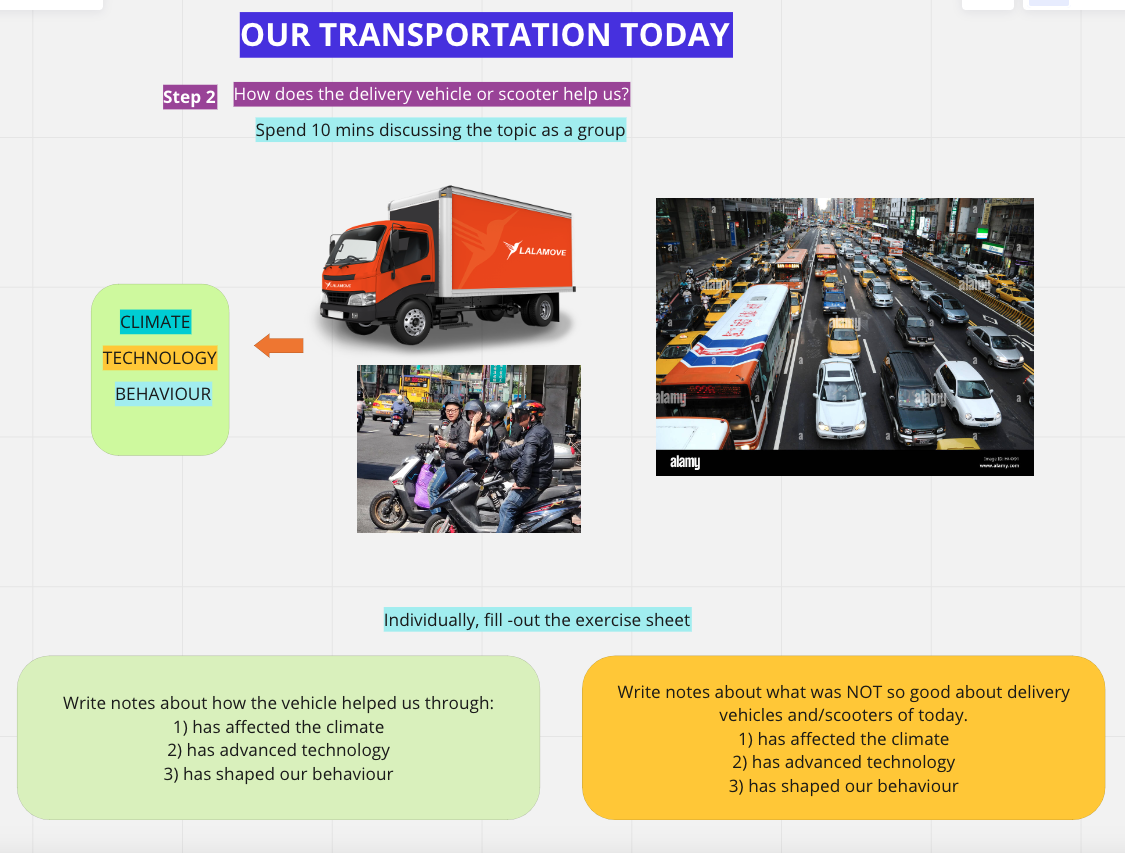
Step 3: Your Image of the Future. Students were asked to write a narrative depicting the image of the future using the same prompts: climate, technology and bahaviour. An example was prepared as a guide, see Figure 7. Students were asked if that's the future they want, and how that image would influence their preferred future for transportation.
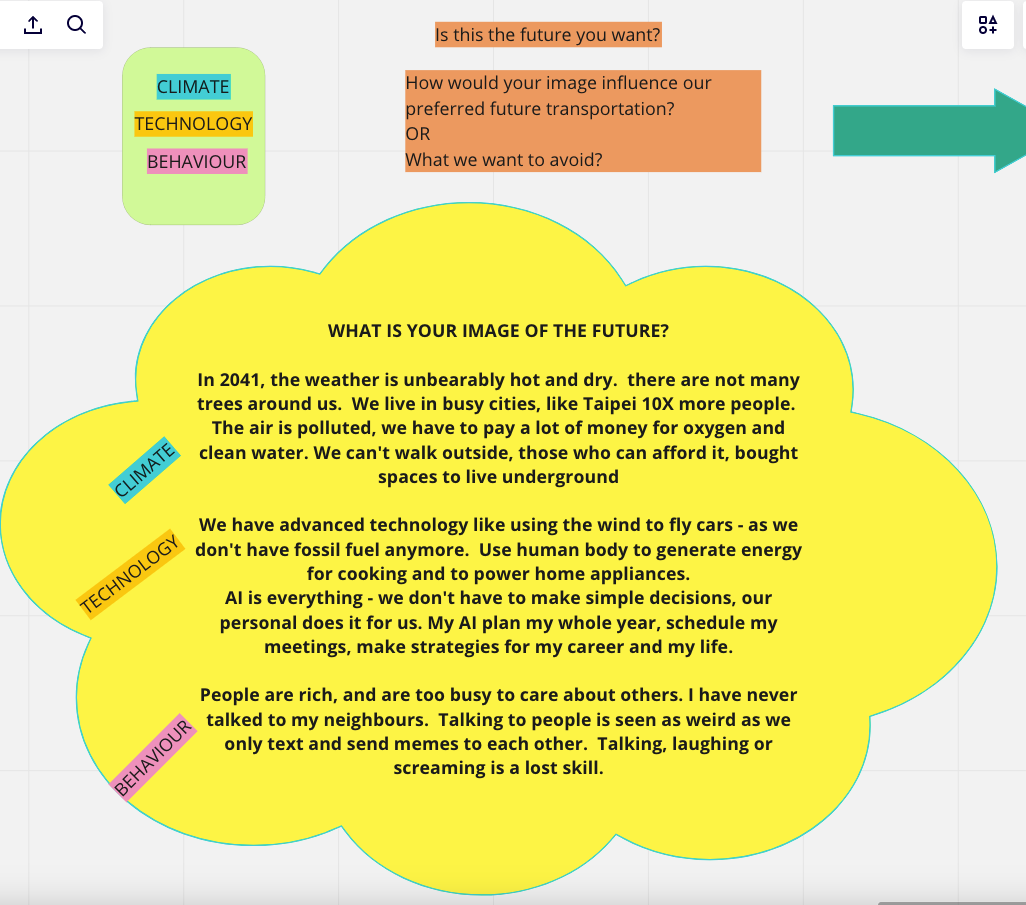
Step 4: Manoa's Four Generic Images of the Future by Dator, 2017. Students were asked to read the article titled: Manoa's Four Generic Images of the Future by Dator, APF Compass. 2017:2-30 to learn about the four futures: continued, collapse, discipline and transform. They were asked to develop a table depicting how the select form of transportation might be for each of the four scenarios. See Figure 8.
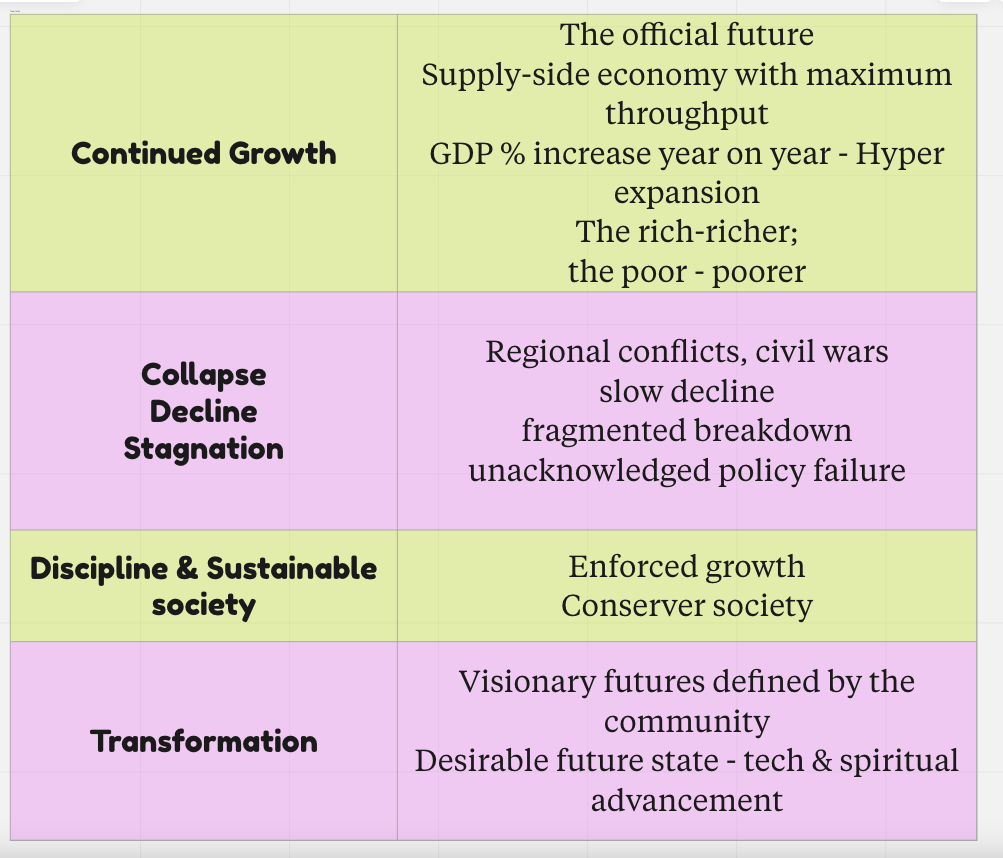
Step 5: Re-imagine Transportation 2041. How might the select transportation look in 2041?
What super powers/magic does the delivery vehicle here?What can it do to help us in the future? Imagine a vehicle that could transform the society to be a better place to live. Think about how it looks - draw the model and you can create it. Figure 9 is a guide provided to students to work on this step.
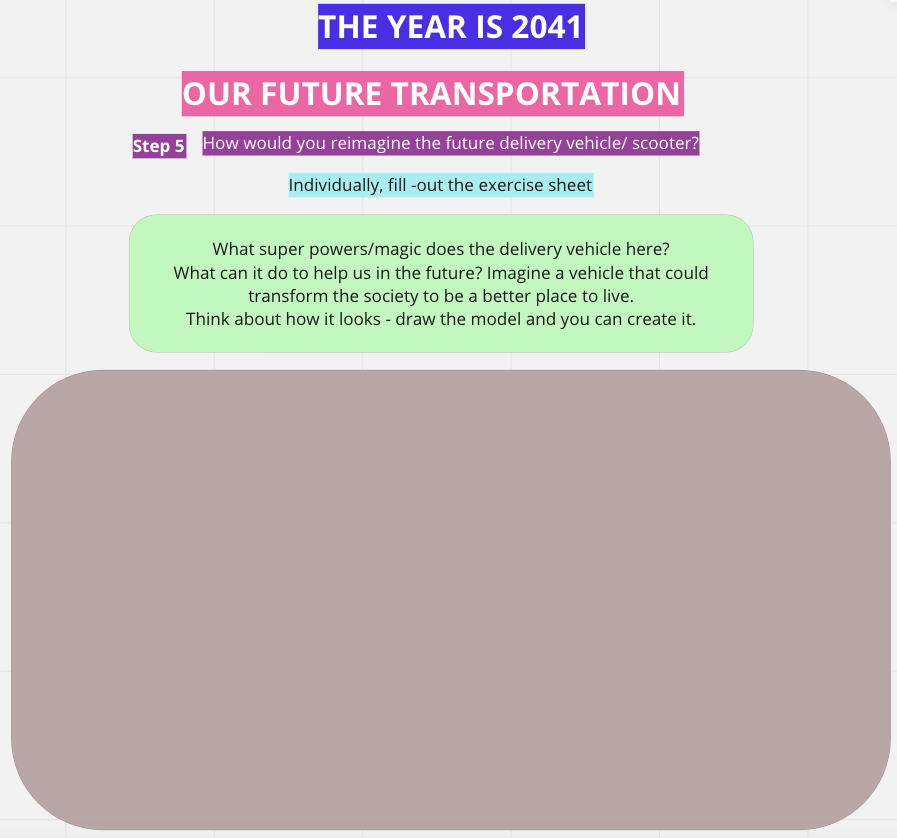
Reflections and Learnings
Most students understood the assignment and managed to complete the activity with some explanations and encouragement. Of course, there were ideas that were limited in imagination or creativity. The thoughts of some students were confined to what was familiar and were constrained by the dominant assumptions,rules expectations of today. Some lack effort but that was expected in a combined class of 61 students. A quarter of the submissions (15 out of 61, 24.6%) missed the point, demonstrated a lack of understanding.
The Images of the Future
Stress from work, learning at the university and studying for exams were the factors related to sadness and depression for 17 (27.9%) students. Ten (16.4%) students attribute their stress and unhappiness to the fast pace of life and the lack of time to spend with loved ones, or on their hobbies. Thirty-three (54%) students want to spend more time for relaxation with friends and family would help make them happier and less lonely.
Based on students expressions of happiness and sadness, students seemed to view their future as being busy, highly-stressed would take up most of their time and they would regret not spending enough time with loved-ones and loneliness might be a common source of unhappiness.
The activity aims at helping students see the pushes of the present, prompt them to think if that's the future they want. The activity stimulates the thinking of alternatives. What would possibly better? If we have ideas to make our world better what kinds of eco-systems or socio-economical environment might support those ideas for alternative futures?
What would I change?
Provide prompts to imagine alternative futures before attempting to create future food or transportation. This idea was implemented in the 2nd activity -reimagining future transportation.
Further reflections would be updated after next week's class.

